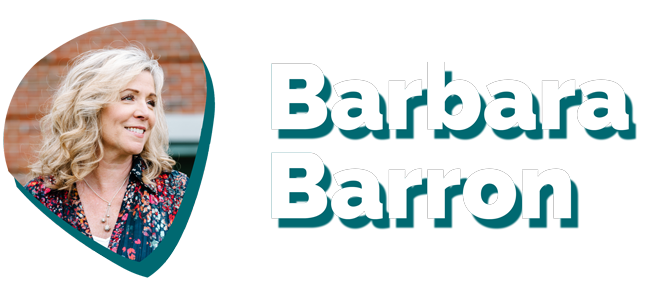September 8th, 2021 by Barbara Barron
In my years as an advancement consultant, I’ve noticed there are some commonalities amongst the schools that are doing advancement really, really well. Here are a few. How does your school stack up?
1. The faculty – yes the faculty – have a clear understanding of the important roles they play in advancing the school.
What this looks like: advancement professionals make it a point to spend time with their teaching colleagues to share some of the key aspects of their work. This might be periodic reports about their work and accomplishments, previews of what key events are ahead. The office of admission updates their colleagues on their progress towards filling the school with right-fit students; development shares the ways they are identifying and engaging families eager to be supportive. Faculty are on the lookout for events and experiences in their classrooms, studios, and on the playing fields that are great examples of the school’s mission in action that they share with the advancement team.
Consider the science teacher I worked with who made a point to give my office a head’s up when the class was preparing for a fun and very visually appealing experiment. We were able to be there to grab a quick video to send to the donor whose gift to the campaign is honored by naming the lab after his deceased mom. It took all of 20 minutes to give this donor a warm reminder of the impact of that gift. Admission had something fresh to pop onto the website for inquiring families. None of it would have been impossible if the science teacher didn’t really get the connection between her work and ours.

2. Volunteers understand and respect the roles they are welcome to play. They embrace the school’s systems and communication processes.
What this looks like: Parents are educated early about the best ways they can be helpful. The school publishes clear guidelines. The Parent’s Association leadership makes a point to help onboard new families to start healthy habits of engagement from the first days. The school leadership keeps clear boundaries to prevent parents from overreaching, setting or changing meeting agendas without buy-in from the school, or making unreasonable demands.
To make this more tangible, I have been offering my clients a template they customize. We call it some version of “A Guide to Giving & Getting Involved”. Together, we describe volunteer activities and the contact people for each. Moreover, we speak directly about the fact the school will be seeking their charitable support and the timing of each of those moments. No surprises. Clear hopes and expectations. Everyone is better for it.
Have you subscribed to the newsletter yet? It only takes a minute.
3. The Head of School fosters an open, collaborative working relationship between the development, admission, and business offices characterized by a respectful, collegial atmosphere.
What this looks like: The Directors of those key departments meet regularly to stay in close communication about important timelines and deadlines. They seek to support one another by sharing calendars and regularly reconcile important data points and reports. When tensions arise between any members of the staff of these departments, the directors work with them to find positive solutions. Successes are celebrated. Setbacks are handled and learned from.
At a former school, those three offices collaborated on a presentation for both the Board of Trustees and the full faculty. We shared our goals, our strategies and plans, and the ways our offices intersect. We adopted a seasonal motif to share the cycles of our work. Did every single person become a champion of our work? No, but we know it only takes a few allies to make the work easier and far more productive. To move things forward. Give it a try!
4. Fundraising goals are set with input from the development staff.
What this looks like: the business office and the Board‘s finance committee understand and appreciate that fundraising is a professional process, not a faucet that can be turned on or up at will. Goals for the school are strategic in nature and developed based on a realistic set of data and reasonable timelines. Members of the development committee and the professional staff are integral members of the planning of future goals and projects.
As a consultant, I have the responsibility and privilege of leading some of these important conversations. Frankly, it’s far easier for me to say the hard, true things about this topic (and so many others!) than it is for the development staff or even the Head of School. That’s why I am frequently hired: to be a truth-teller.
See, if the Director of Development says the goal is not realistic, she sounds like she’s unwilling to work hard. If I say it, based on all the same facts (enrollment, the number of full-pay families who have the capacity to consider a charitable gift, the number of alumni from whom we might anticipate support), leadership accepts it. Yes, I bring deep experience at other schools. But regardless of how and from whom hear it, they need to understand it so they can set goals we can attain, the school can budget on, and we can all celebrate. Without demoralizing the staff.
In closing…
These are just four observations, though – I must admit to you – I probably could come up with a hundred more. But I’m more interested in what you have noticed from your vantage point. What is it that great schools do when it comes to advancement? And what can we do to bring these ideas to the schools that need them most?
As always, my inbox is open – and thank you for what you’re doing.
Stay well,
Barbara Barron

[email protected] // @BBAdvancement
About the Author
Barbara Barron is one of the most respected and highly sought-after independent advancement professionals in the country, having worked with dozens of schools in every corner of the United States. She has raised over $20 million for schools where she served as the Director of Development
Barbara is a New York Times bestselling author, speaker, and presenter who currently advises dozens of schools in various capacities. She is considered a thought leader in the world of advancement, with her writing widely shared by professionals in development offices worldwide.
She can be reached via email at [email protected]







